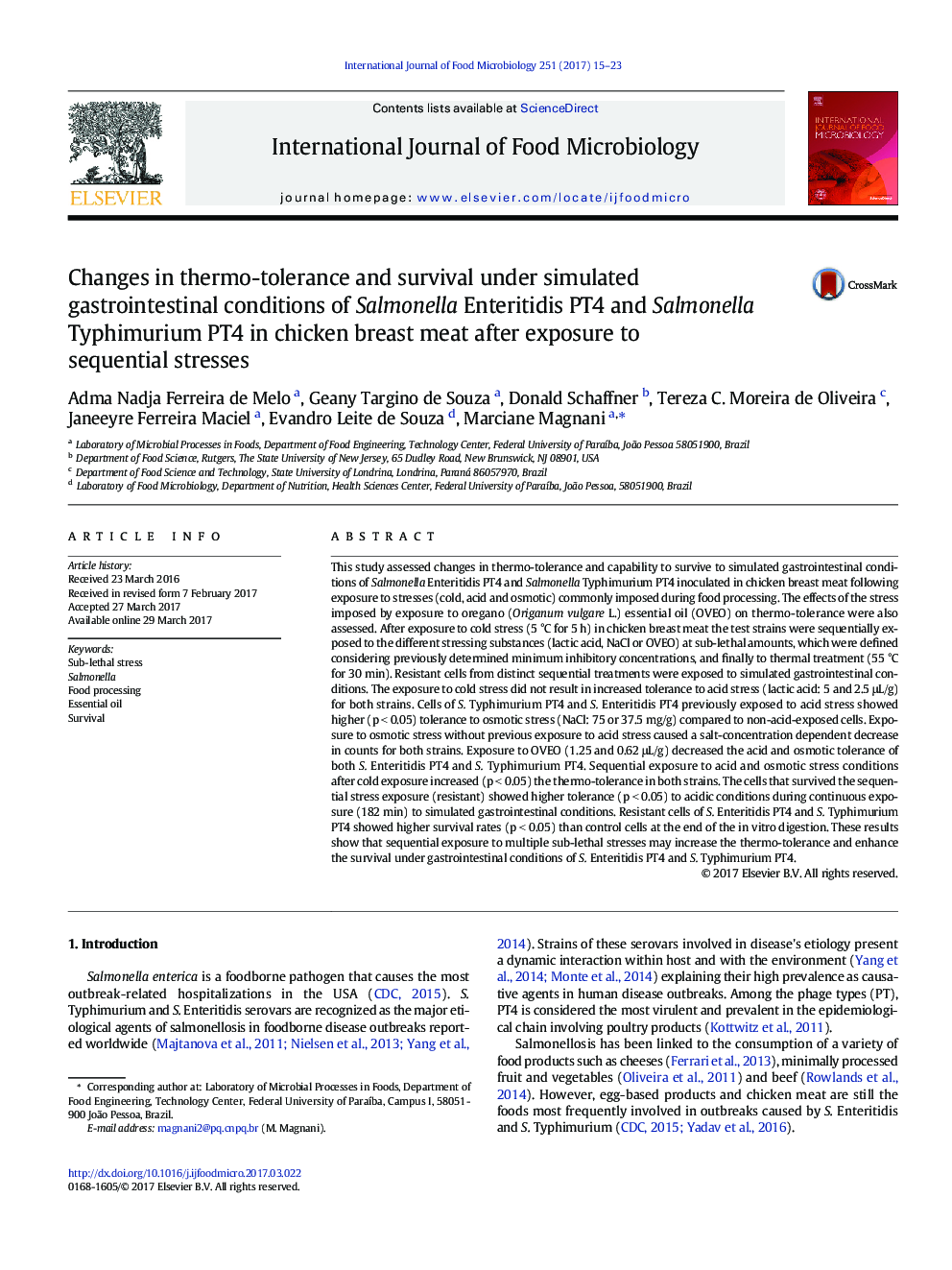| کد مقاله | کد نشریه | سال انتشار | مقاله انگلیسی | نسخه تمام متن |
|---|---|---|---|---|
| 5740716 | 1616532 | 2017 | 9 صفحه PDF | دانلود رایگان |

- Stress exposure increases thermo-tolerance in Salmonella serovars.
- Stress exposure increases survival of Salmonella cells during in vitro digestion.
- Acid exposure increases the osmotic tolerance of Salmonella in chicken breast.
This study assessed changes in thermo-tolerance and capability to survive to simulated gastrointestinal conditions of Salmonella Enteritidis PT4 and Salmonella Typhimurium PT4 inoculated in chicken breast meat following exposure to stresses (cold, acid and osmotic) commonly imposed during food processing. The effects of the stress imposed by exposure to oregano (Origanum vulgare L.) essential oil (OVEO) on thermo-tolerance were also assessed. After exposure to cold stress (5 °C for 5 h) in chicken breast meat the test strains were sequentially exposed to the different stressing substances (lactic acid, NaCl or OVEO) at sub-lethal amounts, which were defined considering previously determined minimum inhibitory concentrations, and finally to thermal treatment (55 °C for 30 min). Resistant cells from distinct sequential treatments were exposed to simulated gastrointestinal conditions. The exposure to cold stress did not result in increased tolerance to acid stress (lactic acid: 5 and 2.5 μL/g) for both strains. Cells of S. Typhimurium PT4 and S. Enteritidis PT4 previously exposed to acid stress showed higher (p < 0.05) tolerance to osmotic stress (NaCl: 75 or 37.5 mg/g) compared to non-acid-exposed cells. Exposure to osmotic stress without previous exposure to acid stress caused a salt-concentration dependent decrease in counts for both strains. Exposure to OVEO (1.25 and 0.62 μL/g) decreased the acid and osmotic tolerance of both S. Enteritidis PT4 and S. Typhimurium PT4. Sequential exposure to acid and osmotic stress conditions after cold exposure increased (p < 0.05) the thermo-tolerance in both strains. The cells that survived the sequential stress exposure (resistant) showed higher tolerance (p < 0.05) to acidic conditions during continuous exposure (182 min) to simulated gastrointestinal conditions. Resistant cells of S. Enteritidis PT4 and S. Typhimurium PT4 showed higher survival rates (p < 0.05) than control cells at the end of the in vitro digestion. These results show that sequential exposure to multiple sub-lethal stresses may increase the thermo-tolerance and enhance the survival under gastrointestinal conditions of S. Enteritidis PT4 and S. Typhimurium PT4.
Journal: International Journal of Food Microbiology - Volume 251, 19 June 2017, Pages 15-23